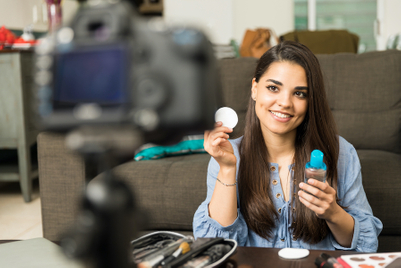
| PARTNER CONTENT |
P&G’s Chief Brand Officer Mark Pritchard threw down the gauntlet earlier this year when he demanded advertising agencies and tech companies clean up their act when it comes to media transparency. Pritchard and the consumer goods giant had been surprised by the sheer quantity of digital advertising fraud taking place during an audit conducted by consulting firm White Ops, which famously blew the whistle on the methbot scandal.
Meanwhile, fellow brand leader Keith Weed, Unilever’s Chief Marketing Officer, told a Wall Street Journal panel at Cannes Lions 2017 that the advertising industry needs a digital supply chain that is less “murky.”
“It’s simple really. Consumers don’t want to see adverts next to untrustworthy or dubious content. And advertisers obviously feel the same way,” said Nicole Bales, Director, Asia Pacific, Integrated Marketing and WSJ. Custom Studios at The Wall Street Journal.
Consumers take stand against fake and objectional digital content
This was echoed in the CMO Council’s study, “How Brands Annoy Fans” published in June. The study found that nearly half of all consumers would rethink purchases, or even boycott products, if they saw their brand adverts alongside offensive digital content. The poll of U.S. and U.K. consumers is part of a broader study being conducted by the CMO Council, in partnership with Dow Jones, called “Brand Protection from Digital Content Infection.”
Social media came in for a drubbing in the study. Despite delivering the second highest number of advertising messages behind television, social media platforms were the least trusted among the top five media channels. A large majority of consumers said they responded differently to the exact same advert, depending on where they saw it; 63 percent saying they responded more positively to adverts run in trusted media.

Advertisers move to safeguard their reputations
Consumers are, in fact, turning to trusted media to escape objectionable content. Just over 75 percent said they were worried about the growing number of fake or biased news sites on the internet that try to influence public opinion or misrepresent facts, history or current events. Three out of five respondents said they actively seek content from trusted, well-known news sources as a result.
Clearly the adage of “location, location, location” rings true now more than ever.
Advertisers are already taking steps to safeguard their reputations by reducing spend in certain digital channels. Several big advertisers, including AT&T, Verizon, Volkswagen and McDonald’s, pulled their adverts from YouTube earlier this year in response to the risk of being placed next to extremist or inappropriate content.
While tactical solutions include everything from automated brand safety tools to better fact checking, the survey reveals the value of a fundamental spending strategy: to keep trusted and established news channels as a dominant part of any advertising placement mix.
Time to repair the truth and the trust
At the Interactive Advertising Bureau’s annual leadership meeting in January, President and Chief Executive Randall Rothenberg also called upon marketers to act against fake news. Referring to it as “the child of clickbait and the grandchild of the direct-mail scams,” Rothenberg said the digital media industry needs to “repair the trust.”
For publishers, advertisers and content marketers, it’s a case of good timing, too—before the issues become too pronounced.
“We need to continue to drive awareness of these issues and ensure those who facilitate the spread of fake news, engineered algorithms and inaccurate metrics are held accountable. It’s about the fight for truth and trust,” said Bales. “One positive outcome of the furor around fake news and objectionable content is that people have realised the value of high-quality, trusted news, and are therefore paying more attention to reputable publishers and sources.”
As The Wall Street Journal’s editor-in-chief, Gerard Baker puts it in the Journal’s own brand campaign: “Truth has always been essential. It’s at the heart of everything we do.”


.jpg&h=334&w=500&q=100&v=20250320&c=1)
.jpg&h=334&w=500&q=100&v=20250320&c=1)
.jpg&h=334&w=500&q=100&v=20250320&c=1)



.png&h=334&w=500&q=100&v=20250320&c=1)

.png&h=334&w=500&q=100&v=20250320&c=1)

.jpg&h=268&w=401&q=100&v=20250320&c=1)






